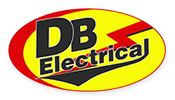A dependable Briggs and Stratton starter is essential to keeping your lawn mower or outdoor power equipment running without interruption. When the starter motor performs well, your engine fires up quickly and reliably. But when it begins to fail, small delays can quickly turn into costly downtime.
At DB Electrical, we specialize in high-quality aftermarket starters that meet or exceed OEM standards. This comprehensive guide covers everything you need to know—from maintenance and replacement to selection and troubleshooting—while connecting you to detailed resources that explain each topic in depth.
1. How to Efficiently Maintain Your Briggs and Stratton Starter
Regular maintenance is the simplest way to extend the life of your starter and avoid unexpected breakdowns. Keeping the starter shaft clean, inspecting electrical connections, and maintaining the right battery voltage all play a major role in preventing performance issues.
If your mower cranks slowly or clicks without turning over, you may already be seeing early signs of wear. Routine care helps prevent these symptoms from developing further. Our article on How to Efficiently Maintain Your Briggs and Stratton Starter explains how short starting cycles, proper lubrication, and battery upkeep can make your starter last longer while improving reliability.
2. Briggs and Stratton Starter Replacement: A Step-by-Step Guide
Even with good maintenance, every starter reaches the end of its service life eventually. Replacing a failing starter promptly prevents damage to other components and restores dependable performance.
The process is straightforward with the right tools and a compatible replacement unit. Our Briggs and Stratton Starter Replacement: A Step-by-Step Guide walks you through preparing your equipment, removing the old starter, wiring the new one correctly, and testing the installation for smooth operation. Following a clear sequence reduces mistakes and ensures your engine starts on the first try.
3. How to Choose the Right Starter Motor for Your Engine
Selecting the correct replacement starter is just as important as installing it properly. Starters may look similar, but small variations—like gear tooth count, voltage, and mounting type—determine whether a unit will work for your specific engine.
In How to Choose a Starter Motor for Briggs and Stratton Engine, we break down the most important compatibility factors and explain how to identify your engine model number before ordering. The article also highlights the advantages of quality aftermarket starters from DB Electrical, which are factory-tested, built with sealed bearings, and designed to last longer than standard replacements.
4. 5 Things You Should Know About Your Briggs and Stratton Starter Motor
Understanding how your starter system works helps you troubleshoot problems with confidence. Common symptoms—such as a clicking solenoid, slow cranking, or continuous spinning—often point to specific issues that can be fixed before total failure occurs.
Our post 5 Things You Should Know About Your Briggs and Stratton Starter Motor explores these common issues, explains how the Ready Start system functions, and provides practical maintenance tips to extend starter life. It’s also a helpful guide for distinguishing between electrical and mechanical faults when your equipment refuses to start.
Dependable Starters and Parts from DB Electrical
For more than four decades, DB Electrical has provided premium aftermarket parts for small engines across the country. Our Briggs and Stratton starters are built with high-grade materials, tested for durability, and priced up to 30% less than OEM.
With same-day shipping on most orders placed before 2 PM EST and free delivery on purchases over $50, it’s easy to get the parts you need fast. Whether you’re maintaining, replacing, or upgrading your Briggs and Stratton starter, DB Electrical delivers the quality and performance your equipment deserves.

